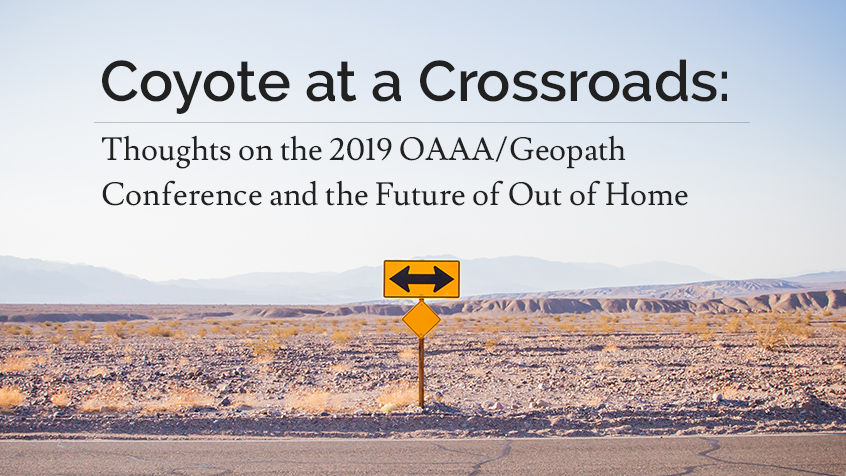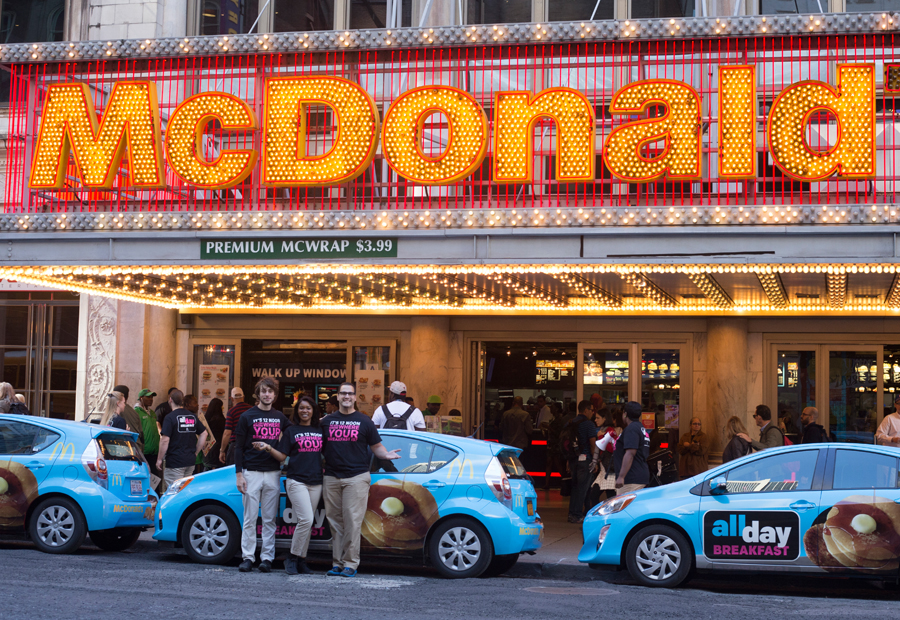There are a few reasons why advertisers don’t use Out-Of-Home media – and all of them are wrong.
But before we dissect these reasons, let’s take a quick look at the underlying decision-making process and how that influences the choice to include OOH or not.
It’s the question of logic vs emotion. (Cue Captain Kirk and Mr. Spock)
Contrary to popular belief, and as much as we might like to believe otherwise, many business decisions are not logical, rational, and fact-based. Conventional wisdom would have us believe that features, price, reliability, etc., are the main factors influencing people when making business decisions.
Bull.
We make decisions overwhelmingly based on emotion.
How often have you heard someone say (or have you said), “I’m going to go with my gut”? We make decisions based on emotion and then rationalize them with the logical part of our brain.
As I sat down to write this, I was going to cite the groundbreaking study from Google, “From Promotion to Emotion: Connecting B2B Customers to Brands”. The study showed, among other things, that “B2B purchasers are almost 50% more likely to buy a product or service when they see personal value – such as opportunity for career advancement or confidence and pride in their choice — in their business purchase decision. They are 8x more likely to pay a premium for comparable products and services when personal value is present.” But that study was over a decade ago, and I was hesitant to include it – even though inherent human behavior hasn’t changed that much.
Then I thought about including more recent research, like that from Harvard professor Gerald Zaltman which showed that 95% of purchasing decisions are subconscious. But that was focused on consumer decisions, and while the thought process is similar, it’s not the same.
Then, lo and behold, stop the presses, hold the phone, insert the record scratch sound effect….
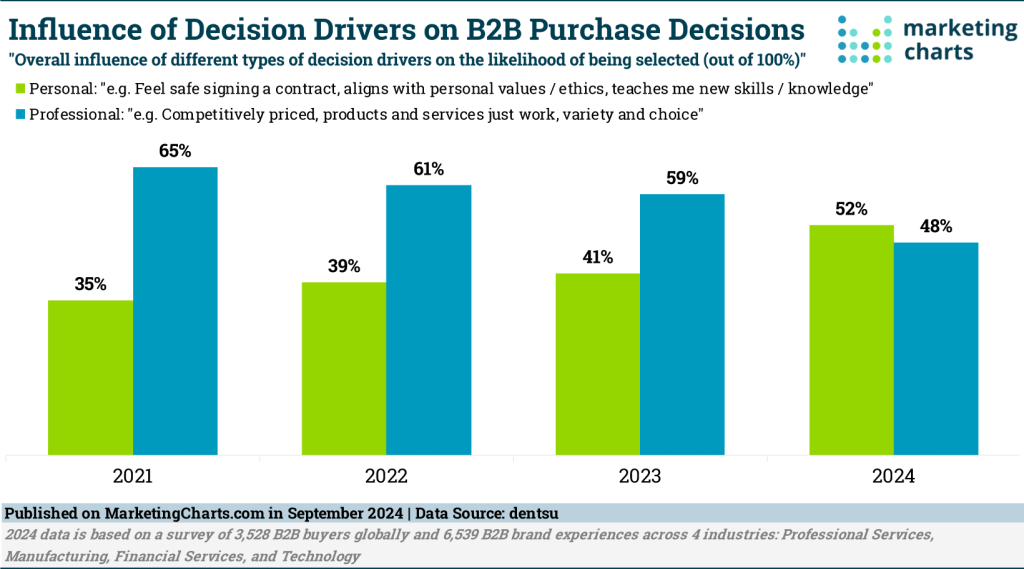
Why thank you, Dentsu, that will do just fine.
According to their report, “For the first time, personal decision drivers have overtaken professional ones in importance among B2B buyers.”
Mic drop.
Business decisions can be a big deal, and they can significantly affect someone’s reputation and career path. So, what are some of the emotions that influence these decisions?
- Trust and Confidence: Will this decision cost me my job? Is this going to work, or will it blow up in my face?
- Personal Value: How will this affect my life? Is this going to make me look good in front of my boss or client? Or will I look like a total schmuck?
- Optimism and Vision: If I pursue this OOH media plan, it will help launch our product, and we will be the most recognized, best-in-class provider of widget X in the world.
- Anxiety Reduction: Making business decisions can be stressful. Buyers will often choose the path that “feels safest” to avoid the potential stress of uncertainty.
All right, already… enough emotional jibber-jabber – let’s get down to the billboards….
Many advertisers are reluctant to use Out of Home media. It is often left till the very end of planning and added as an afterthought. It also usually only receives about 4-7% of the media budget, even though research has shown that investing 10-15% of the media budget (depending on the industry and specific goals of the campaign) can dramatically improve the performance of other media channels, and reduce the budget that is wasted in other channels by spending well past the point of optimum return.
We can help you be prepared to answer those objections and look like a rock star (see… we’re providing positive emotional and personal benefits…we’re good that way).
Here are some reasons you can use to answer objections from your client (or your boss).
Objection #1: Out-of-Home Media Is Too Expensive
This is an easy one. Out-of-Home media consistently delivers one of the most competitive CPMs of any major media channel. OOH media averages just over $5.00 which is the second-lowest CPM after online/mobile display and roughly a quarter of TV.
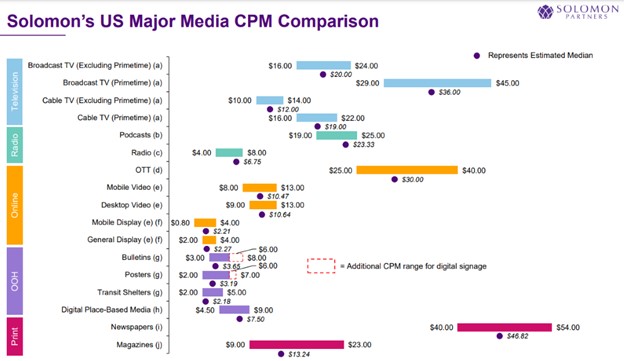
But, there’s more to the discussion than just that. As we’ve frequently said, price does not equal value. It’s not just about the CPM. Out-of-Home also boosts the performance of other media channels – particularly digital ones. And, OOH provides some of the highest recall rates of any media. When you combine all of these elements it’s clear that Out-of-Home provides value far beyond its price.
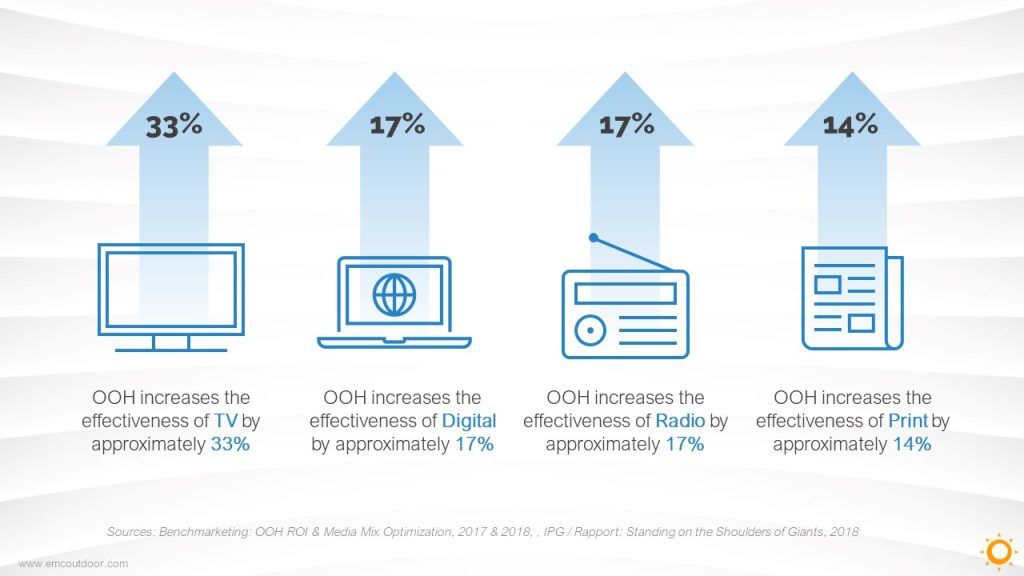
That’s not to discount legitimate concerns about cost. Is a premium digital billboard in Times Square expensive? Absolutely. But that is the exception, not the rule. The true workhorses of OOH are the local billboards, posters, transit shelters, buses, and more that intersect with consumers’ normal daily lives where they live, work, and play.
Cost is one of the reasons why advertisers don’t use Out-Of-Home media, and one of the easiest to dismiss.
Objection #2: Out-of-Home Media Lacks Sophisticated Targeting.
Can OOH media be targeted like digital media? No, obviously not. Honestly, it would be a little ridiculous to suggest otherwise. OOH is a one-to-many media channel.
But that doesn’t mean it lacks sophisticated and, most importantly, practically effective targeting capabilities.
Out-of-Home has come a long way in the last ten years, and the days of basing impressions on county road traffic counts are a distant speck in the proverbial rear-view mirror. Efforts by the industry and led by its independent measurement organization, Geopath, have made tremendous strides in developing targeting tools that give marketers a highly detailed understanding of media, location, and audience.
Drawing mainly on mobile device data, these planning metrics allow advertisers to identify media that indexes higher for their audience based on various criteria. With this information, it’s now possible to effectively plan your OOH down to the neighborhood.
Also… take a deep breath and say with me, “It’s ok for some media not to be 1-to-1 targeting”. Not everything in a marketer’s arsenal needs to target “men, 30-31 yrs old, taller than 6 ft, brown hair, 20-30 vision, who enjoys the literary works of Gabriel Garcia Marquez, and hates pumpkin spice”.
There’s a great big world out there, and developing an audience beyond your core existing buyers is an essential path to growth. The fact that this is one of the reasons why advertisers don’t use Out-Of-Home media leads us to believe we need to educate advertisers about the state of targeting.
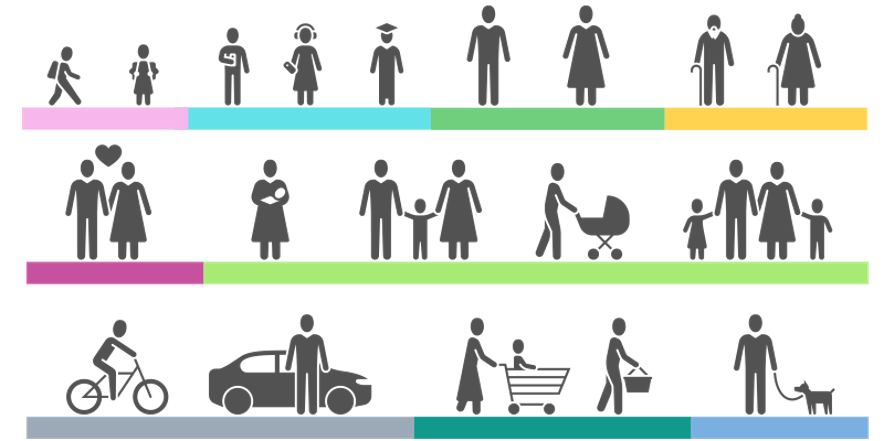
Objection #3: We Can’t Measure the ROI for Out-of-Home
We won’t sugarcoat it: Comparing OOH performance to other media channels can seem challenging and is one of the main reasons why advertisers don’t use Out-Of-Home media. No one will click on a billboard, and a transit shelter will not appear in their email inbox. That bus wrap will not keep scrolling through their social feed until they click on it.
But there are solutions. As my colleague (and brilliant OOH strategist) Hallie Friedman is fond of saying, “anything can be measured if you agree upon KPIs upfront and use apples-to-apples comparisons sourced from reliable, credible (valid), and current data to draw insights”. It just takes a little bit of extra thought, and a realistic view of what you are expecting.
Walk-in studies tracking mobile data are efficient for businesses with a physical footprint. These can show the effectiveness of OOH in driving traffic to store locations. A recent study for a retail client showed that OOH drove a 51% lift in foot traffic to their stores compared to those that were not. It also provided new, unanticipated insights to the client about where their customers were coming from and how far they traveled.
Another solution is brand awareness studies. These can survey exposed and unexposed audiences to determine the campaign’s effectiveness. In a recent campaign our study showed a 47-point lift in brand awareness, a 71-point lift in brand favorability, and a 15-lift in consideration. While these may not be as simple and direct as “click=purchase”, they are compelling numbers that clearly demonstrate the value of the media.
But, as the great Albert Einstein famously did not say, “Not everything that counts can be counted, and not everything that can be counted counts.” The lesson here is that not every media channel can be pigeonholed into one measurement system… and that’s OK. Sometimes we need to think about the different types of value that media can bring, and how the work together holistically to build a brand.
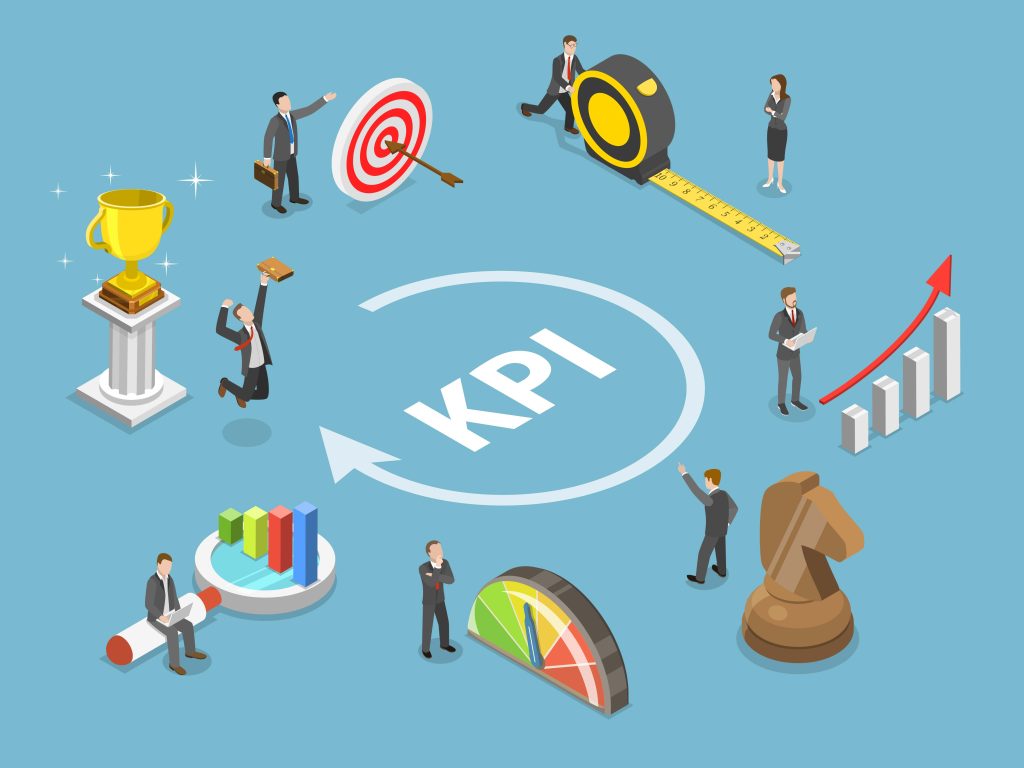
Objection #4: The Exposure Time Is Too Short
The general consensus is that average billboard viewing time is about 8 seconds, and probably ranges from 4-12.
That’s an eternity.
TV ads are typically 30-second spots, but they compete with the fridge, the bathroom, and the phone—OOH doesn’t have to worry about that competition. (Oh, and it also costs a fraction of the cost of the TV spot.)
According to research by Statista time spent with mobile ads can range from less than a second up to six seconds. How quickly do you scroll past the ads in your social media feed?
The brief exposure as you drive past a billboard on the highway is one of the reasons why advertisers don’t use Out-Of-Home media. But in reality, most media have a fairly brief viewing window, and Out-of-Home is right in the mix with everything else.
It’s also important to consider that different types of OOH media can have very different dwell times. Ads at the gas pump, or standing on the platform waiting for the train, or in line at the grocery store, or in the locker room at the gym can have much longer times. This can also be leveraged to employ other methods of engagement like QR codes, which in turn allow for more detailed measurement.
The lesson here is to not consider Out-of-Home as one media when thinking about creative messaging. It’s important to understand the differences and adjust accordingly. Billboards should not be used for long, complicated, detailed messaging – keep it simple. Seven words or less is the old adage. But, there are loads of Out-of-home media choices that allow for longer messaging. The best OOH campaigns will take advantage of each format’s inherent strengths and cater to the creative to maximize them.
Objection #5: Competition
The physical nature of OOH media naturally limits the amount of advertising a person can see at any given time. Now, do different environments have different levels of ad saturation? Sure. There is certainly a range. But even in a more densely packed market there but there are a few important things to remember.
First – OOH can’t be skipped, blocked, or turned off. It is always on, and always there. That also means there is never any concern about the actual delivery of the ad.
Second – OOH provides high visibility. Many of the Out-of-Home formats are just physically huge. The scale of the space means it can’t be missed. It also creates a sense of scale and “seriousness” for the advertiser.
Third – OOH is non-intrusive; it does not insert itself into the viewer’s environment. Their experience of the media is organic and flows as part of their everyday travels.
Finally – OOH is one of the most trusted ad formats. So when it comes to getting your audience to pay attention, Out-of-Home starts from a position of trust. People are inclined to believe in the media as a communication channel. If you are starting from a certain base level of trust that gives the media an advantage over other channels.
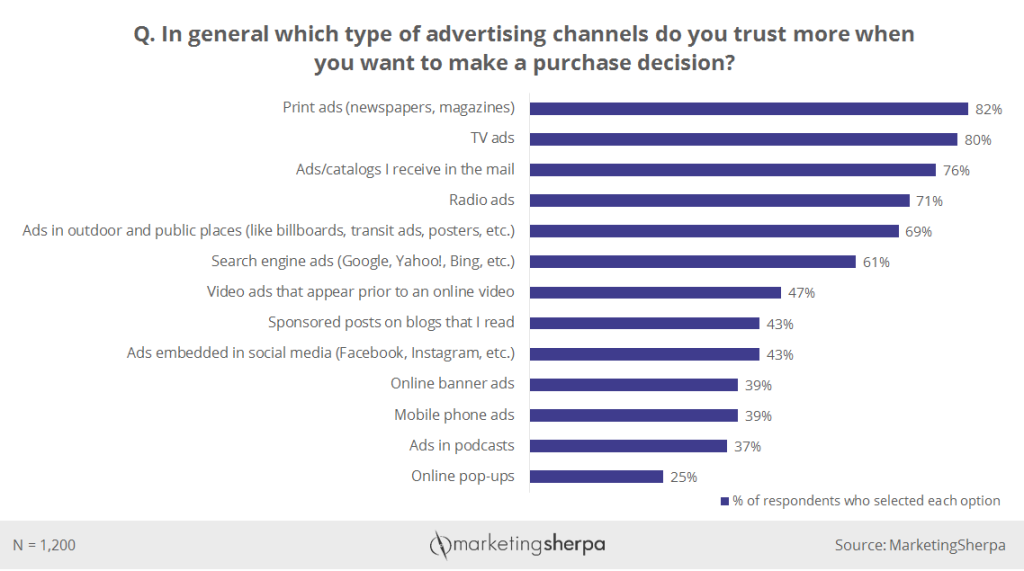
Objection #6: What About Wasted Impressions?
Since the advent of digital media and the inherent one-to-one nature of the channel, we have become… dare I say… obsessed… with the idea of “wasted impressions”.
Another famous quote not by Einstein says; “Insanity is doing the same thing over and over again and expecting different results.”
How do we acquire new customers if we keep marketing to the same group of people? How does the business grow if we only market to our existing customer base?
There are always more customers out there, and we have to find ways to reach them.
Field and Binet’s groundbreaking work in “The Long and the Short of It” showed that the long-term effects of brand building will consistently outperform short-term, sales-driven ads in terms of brand growth. More than a decade after their publication, the data continues to support their conclusions. As noted marketing expert Mark Ritson points out in his analysis of the theory:
“In contrast, the long of it is any communication that intends to create long-term memories, which might then result in enduring changes in human behaviour. Building awareness of our coffee brand with consumers who do not know us, yet. Driving consideration among consumers who don’t think our beer is for them, or for this occasion. Getting consumers to think our premium brand is premium.”

Objection #7: Out-of-Home Media Lacks Flexibility
Ok – this one is just silly.
According to the OAAA, there are about 250 different types of OOH Media. A billboard is Out-of-Home, but so is a coffee cart, or a flower wall, or a replica of Mt Rushmore.
And that doesn’t just mean different-sized billboards. There is tremendous variety in the location, type, size, capabilities, dwell time, etc., of all the different Out-of-Home media types.
Out-of-home offers flexibility in audiences and their journeys. Reach them on their commute to work, on their path to purchase, or at an event or professional conference.
Out-of-home offers flexibility in its method of engagement. Billboards are tremendously powerful at building brand awareness. Other media can move customers through the consideration and intent phases. Experiential activations can connect one-on-one with your audience to deliver samples, get sign-ups, conduct product demos, and more. With the variety of media and placement options, OOH can reach consumers at every stage of the sales funnel.
And we haven’t even talked about Digital Out-of-Home.
As more media are converted to DOOH platforms, this adds a whole extra layer of flexibility. Campaigns can be launched and paused at a moment’s notice. The creative can be changed as quickly as an email. Creative can be dayparted or include dynamic options like the closest retail location. And more…
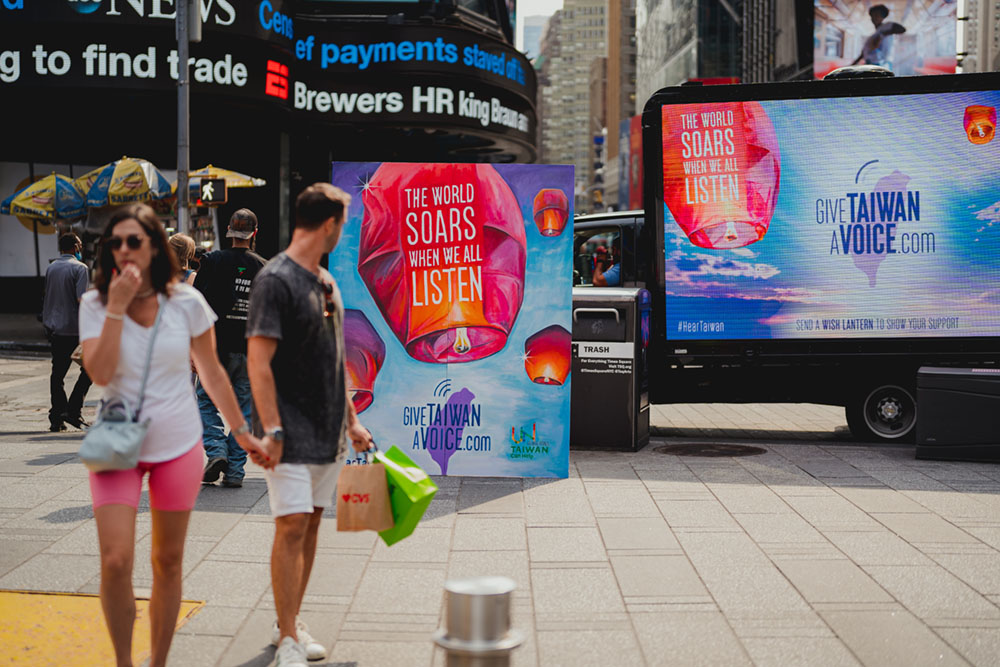
Don’t Be Afraid – The Reasons Why Advertisers Don’t Use Out-Of-Home Media Don’t Really Hold Up:
There are many reasons why advertisers don’t use Out-Of-Home media, but once we start to look into them a little more deeply and unpack the underlying rationale, we find that these reasons are usually attributable to a lack of information.
OOH is often a small part of the overall media budget, and it’s not the flashiest, shiniest object in the marketer’s toolkit. Sadly this means that many marketers remain relatively uninformed about the OOH media ecosystem.
Out-of-Home can be a powerful addition to a media plan, but you might need some help getting buy-in from decision-makers who are not convinced.
TLDR: Here are the key talking points you can use when your boss or client objects to including Out-of-Home in the media plan.
- Out-of-home media is not cost-prohibitive. Its CPM compares very favorably to other media channels and provides value in other ways as well.
- Out-of-Home Media can be highly targeted. Advancements in location data allow OOH to be targeted down to neighborhood levels.
- Out-of-Home media’s performance can be effectively measured. It may not be the same as click=buy, but there are ways to evaluate its performance.
- Out-of-Home has exposure times that are comparable to other media. OOH can also provide media formats with a variety of dwell/view times.
- Out-of-Home benefits from a relatively uncluttered environment. OOH is one media that can’t be skipped, blocked, or turned off, and it’s usually in a fairly uncluttered ad environment.
- Out-of-Home impressions are not wasted. OOH media allows advertisers to reach adjacent audiences and develop new ones.
- Out-of-Home media is highly flexible. OOH is a media system with a plethora of choices. From formats to audiences to delivery to engagement, whatever you are trying to do, there is an OOH solution that will help.
This is by no means a completely comprehensive list. We’ve heard all sorts of reasons, and we can help you with answers for them all. And if this all feels a little overwhelming and you’d like to learn more, we’re here to help. We can supply you with all the support rationale and objection handling you need to look like a rock star.


